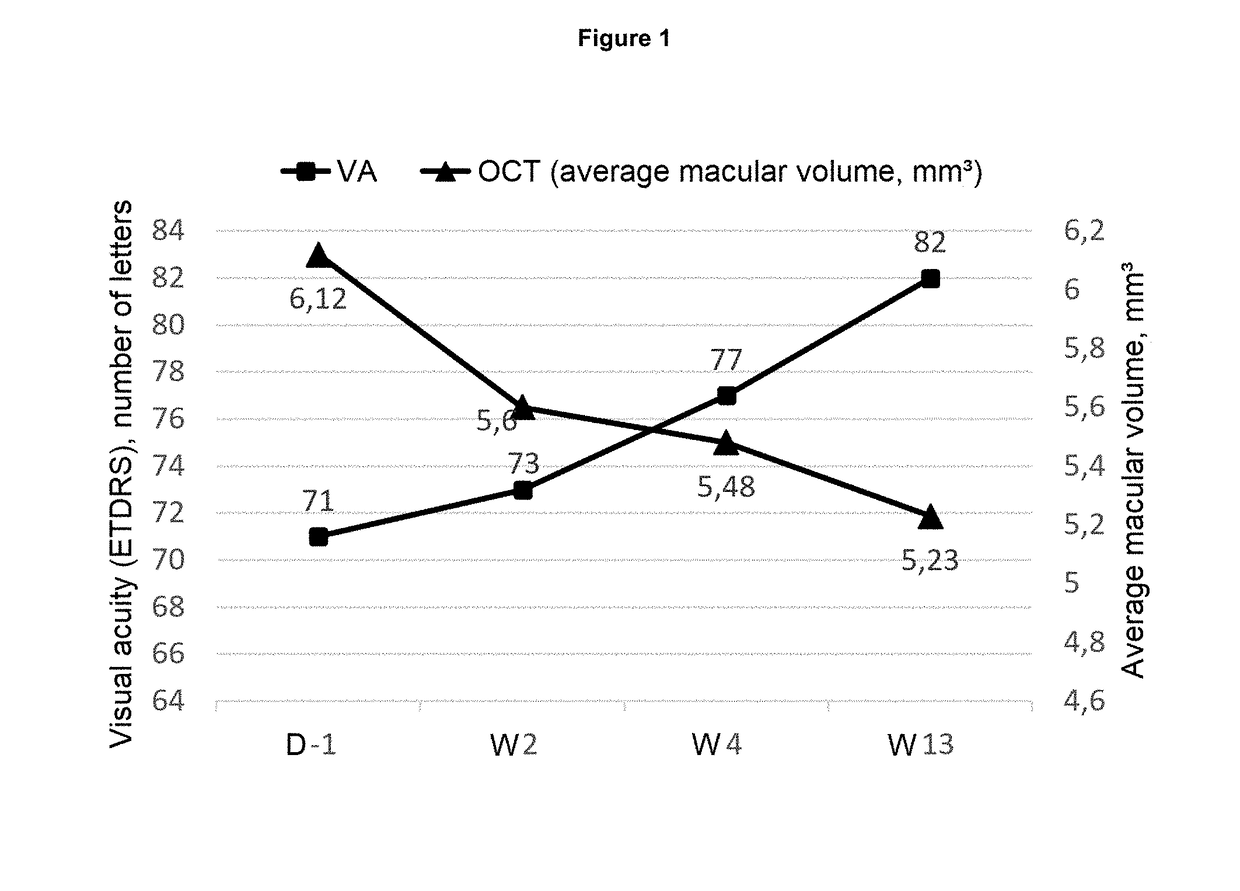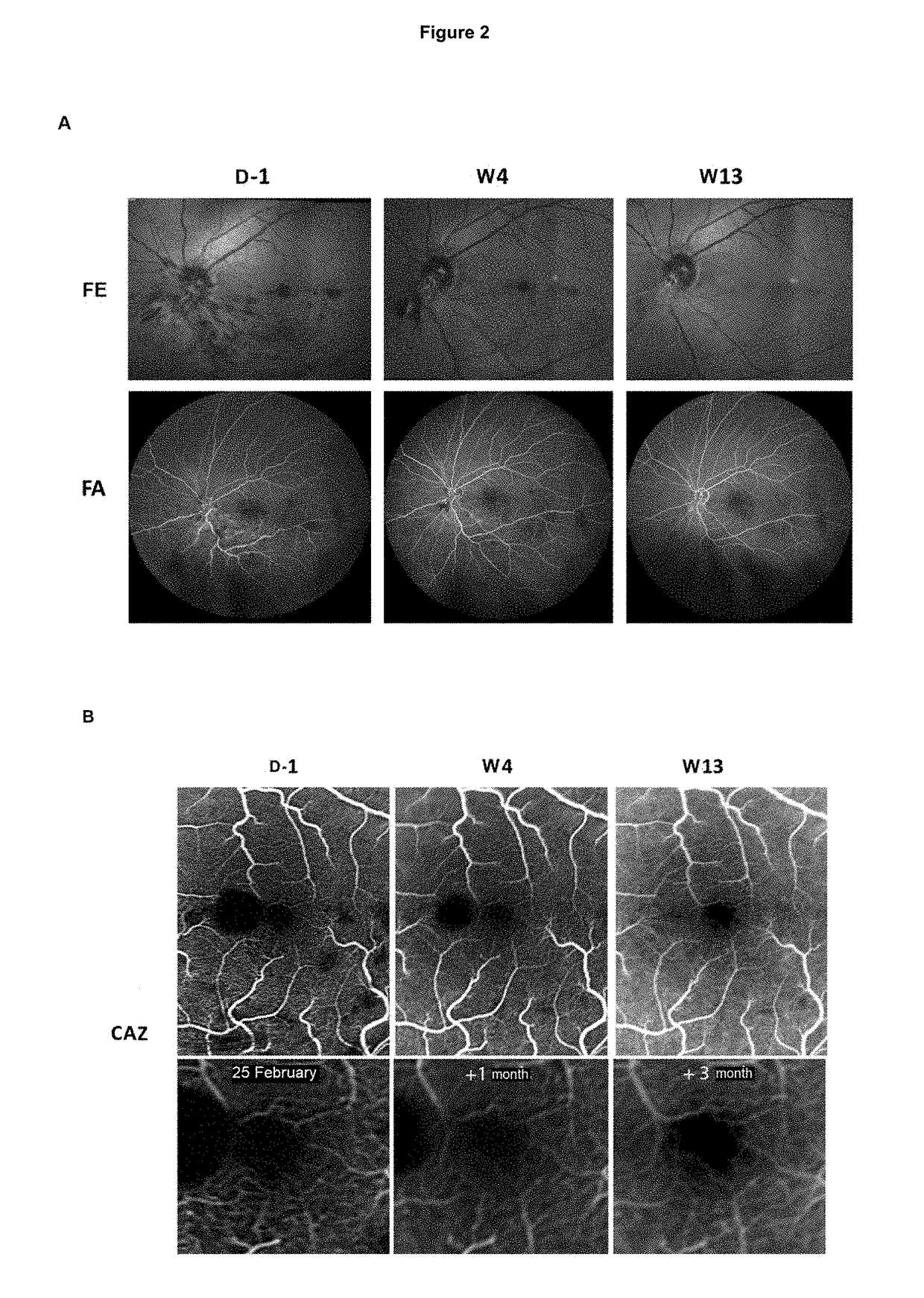Use of hydroxycarbamide for preventing retinal nonperfusion
a technology of hydroxycarbamide and retinal blood, which is applied in the direction of cardiovascular disorder, sense disorder, drug composition, etc., can solve the problems of ineffective treatment (aspirin, warfarin), inability to prevent bilateral blindness, and pain in local administration for patients, so as to reduce the risk of bilateral blindness , reduce the extension of capillary blood vessels, and reduce the effect of retinal ischemic complications
- Summary
- Abstract
- Description
- Claims
- Application Information
AI Technical Summary
Benefits of technology
Problems solved by technology
Method used
Image
Examples
examples
1. Patients Examined in the Study
[0076]Patients enrolled in the study are at least 45 years of age, of both sexes, presenting with CRVO, the symptoms of which appeared less than one month before receiving care and included a loss of visual acuity with corrected visual acuity of the affected eye less than 6 / 10 (73 ETDRS letters).
[0077]Patients not meeting these criteria are not included in the study. Also excluded are patients:[0078]Having vision in only one eye (whose contralateral visual acuity is less than 4 / 10)[0079]Having a history of trauma or of oculo-orbital surgery in the 6 months preceding the first ophthalmologic clinical manifestations,[0080]Having a history of cephalic radiotherapy,[0081]With a tumor of the orbit or of the optic nerve homolateral to the RVO,[0082]With contralateral vascular retinal pathology, in particular moderate diabetic retinopathy (the minimal stage not being a contraindication),[0083]With ocular neovascularization (including rubeosis iridis),[0084]...
PUM
| Property | Measurement | Unit |
|---|---|---|
| Fraction | aaaaa | aaaaa |
| Fraction | aaaaa | aaaaa |
| Fraction | aaaaa | aaaaa |
Abstract
Description
Claims
Application Information
 Login to View More
Login to View More - R&D
- Intellectual Property
- Life Sciences
- Materials
- Tech Scout
- Unparalleled Data Quality
- Higher Quality Content
- 60% Fewer Hallucinations
Browse by: Latest US Patents, China's latest patents, Technical Efficacy Thesaurus, Application Domain, Technology Topic, Popular Technical Reports.
© 2025 PatSnap. All rights reserved.Legal|Privacy policy|Modern Slavery Act Transparency Statement|Sitemap|About US| Contact US: help@patsnap.com


